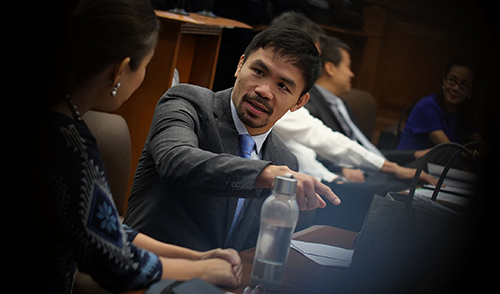
STATEMENT
Senator Manny Pacquiao, asked to comment on the Supreme Court’s decision on November 8 allowing the burial of former President Ferdinand Marcos at the Libingan ng mga Bayani, explained that the decision is based on the Philippine Constitution:
“Ganito kasi ‘yun eh. Intindihin natin yung Constitution. Kung Constitution ang pagbabasehan natin, once na ikaw ay naging presidente at elected ka, you have the right. Kung baga qualify ka na ilibing doon sa Libingan ng mga Bayani,”
Sources: Manila Bulletin Twitter Video, Inquirer.net: Pacquiao: Forgive Marcos, move on
Does the Constitution, known as the highest law of the land, allow former Presidents to be buried at the Libingan ng mga Bayani?
FACT
No.
It is the Armed Forces of the Philippines, through a regulation issued in 1986 under then AFP Chief of Staff Gen. Fidel V. Ramos, that says former Presidents can be interred at the Libingan ng mga Bayani.
The regulation, re-published in 2000 as AFP Regulation G 161-375, lists down 10 categories of deceased persons entitled to be buried at the cemetery:
- Medal of Valor Awardees
- Presidents or Commanders-in-Chief, AFP
- Secretaries of National Defense
- Chiefs of Staff, AFP
- General/Flag Officers of the AFP
- Active and retired military personnel of the AFP
- Former AFP members who laterally entered/joined the Philippine National Police and the Philippine Coast Guard
- Veterans of Philippine Revolution of 1896, WWI, WWII and recognized guerrillas.
- Government Dignitaries, Statesmen, National Artists and other deceased persons whose interment or reinterment has been approved by the Commander-in-Chief, Congress or the Secretary of National Defense.
- Former Presidents, Secretaries of National Defense, widows of former Presidents, Secretaries of National Defense and Chiefs of Staff.
Sources:
AFP Press Release on LNMB Rules by VERA Files on Scribd

